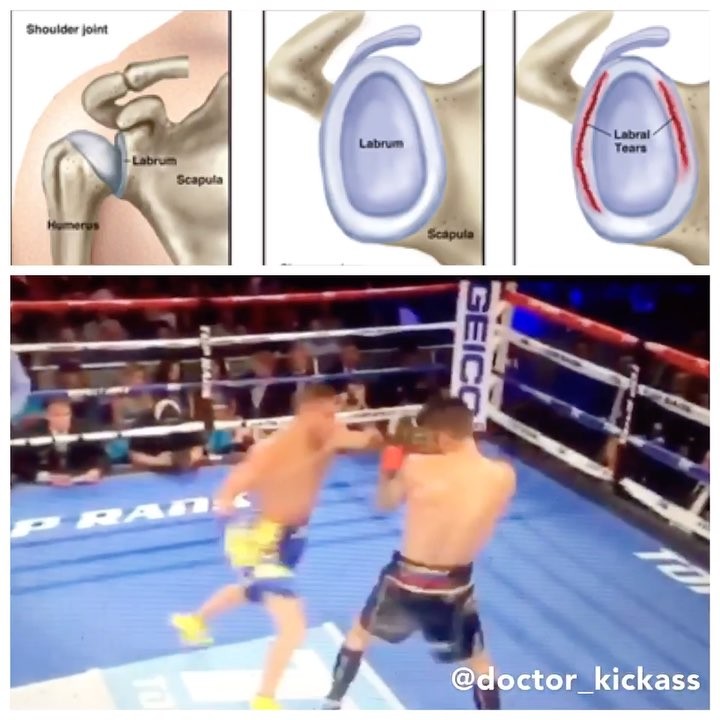Labral tears and combat sports
••••••••••••••••••
The shoulder has the most mobility of any joint, and unfortunately the more mobility a joint has the less inherent stability there is.
.
The shoulder (glenohumeral joint) involves the head of the humerus (upper arm) articulating with the glenoid fossa.
•A stable shoulder will have the humeral head centered in the glenoid fossa with arm movements.
•An unstable shoulder means the dynamic and static stabilizers are unable to keep the humeral head centered.
1️⃣Dynamic stabilizers (rotator cuff muscles): These muscles act like suction cups on the humeral head to keep it compressed and stable.
2️⃣Static Stabilizers: ligaments, joint capsule and labrum.
Glenoid labrum: The function of the glenoid labrum is to deepen the socket for the humeral head so that it has more contact with the fossa
Shoulder dislocations: When the stabilizers fail and the humeral head translates too far from the fossa. The most common dislocation is anterior (forward). The static stabilizers often gets damaged or torn so repeated dislocations are common after the first.
Why does the labrum get damaged in fighting?
Biceps brachii is an arm muscle with two heads, and the long head of the biceps has significant attachment to the superior aspect of the labrum (up to 50%). Due to the strong connection with the labrum when there are large or repetitive forces on or from the biceps load will be transferred to the labrum. This occurs in combat sports with repetitive maximal punches.
.
An example of this was Lomachenko vs Linares. When @lomachenkovasiliy throws the lead hook it appears that his shoulder translates too far forward (anterior dislocation) and he relocates it with the excessive swing back. Following the fight it was revealed Lomachenko had a severe labrum tear and significant instability. Some labrum tears may respond to conservative treatment but in his case surgery was required.
.
References:
1️⃣Neumann, D. A. (2010). Kinesiology of the musculoskeletal system: Foundations for rehabilitation. 2. p. Mosby Elsevier.
2️⃣Wilk, K. E., Reinold, M. M., & Andrews, J. R. (2009). The athlete’s shoulder. Elsevier Health Sciences.

